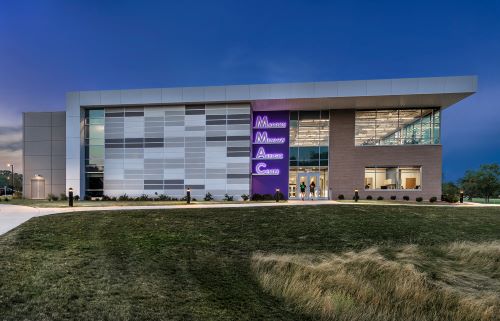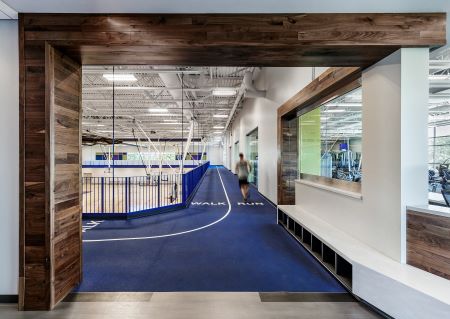By John Dzarnowski
Comprehensive master planning is the cornerstone of developing and revitalizing community spaces. Yet, this process has its challenges, especially when faced with the daunting reality of limited funds available to implement the plan. At the heart of the challenge lies the delicate task of harmonizing community aspirations with the financial constraints faced by recreational agencies.
The limitations of funds necessitate tough decisions, leading to a participatory approach where community engagement becomes pivotal. Leaders can identify and prioritize the most pressing needs and desired outcomes by involving the community in decision-making.
Financial Ingenuity: Navigating Budgetary Boundaries
The perpetual hurdle of limited funds is a formidable impediment to realizing ambitious community recreation projects. Despite

the passion that drives recreational agencies to breathe vibrant life into placemaking, financial constraints often impose restrictions. However, the key to unlocking the potential of the next master plan is found in adopting innovative funding mechanisms. Community recreation leaders can overcome these financial challenges by embracing public-private partnerships, partnering with other municipal agencies and capitalizing on grant opportunities. These approaches inject much-needed capital and bolster the economic viability of projects, expanding the agencies’ budgetary scope. By exploring novel avenues for funding, leaders can navigate these financial constraints, ensuring that their master plans not only envision but also actualize transformative recreational spaces for the benefit of the entire community.
Budgeting and Aligning Priorities. In tandem with limited funding, an effective strategy involves a meticulous focus on budgeting and aligning priorities. It is key that the initial 10 years of projects within a master plan be approached in a phased manner, with the first seven years having specific goals and the subsequent three adopting a more general outlook. This phased approach facilitates the alignment of potential grant submissions with project priorities. Coordination in this process is imperative, necessitating close collaboration with clients, bond stakeholders and in-house finance teams to ensure the financial feasibility of the proposed projects. By strategically managing priorities and budgets, community recreation leaders can navigate the intricacies of limited funding resources, ensuring a sustainable and impactful realization of their master plans while avoiding the challenges posed by an overly ambitious 20-year developmental scope.
The Art of Sequencing: Phased Approaches for Sustainable Recreation
Navigating the intricacies of community recreation master planning involves addressing the dual challenges of deferred maintenance issues and the imperative of ongoing upkeep within limited financial constraints. The critical obstacle of deferred maintenance, often stemming from insufficient funds, threatens the sustainability of community assets. A successful jumpstart to  the next master plan requires a nuanced approach that balances the eagerness for new amenities with the necessity of ongoing maintenance. Community leaders must prioritize facility upkeep alongside new developments, ensuring the long-term sustainability of infrastructure and averting the specter of costly unbudgeted repairs in the future. Integrating comprehensive, long-term maintenance plans into the master planning process becomes a strategic cornerstone, fortifying the durability of community assets and fostering a resilient foundation for the future. This proactive stance addresses immediate needs and ensures community spaces thrive and endure over time.
the next master plan requires a nuanced approach that balances the eagerness for new amenities with the necessity of ongoing maintenance. Community leaders must prioritize facility upkeep alongside new developments, ensuring the long-term sustainability of infrastructure and averting the specter of costly unbudgeted repairs in the future. Integrating comprehensive, long-term maintenance plans into the master planning process becomes a strategic cornerstone, fortifying the durability of community assets and fostering a resilient foundation for the future. This proactive stance addresses immediate needs and ensures community spaces thrive and endure over time.
Let’s consider a case scenario: maintenance and capital projects. Examining the maintenance landscape further, a hypothetical scenario involves a multifaceted maintenance program encompassing routine tasks like playground rotations, HVAC upgrades and roof replacements. These routine tasks form integral components of an ongoing capital maintenance program to keep facilities in optimal condition. Conversely, capital projects entail more significant endeavors such as facility replacements, new park development and major remodels. Balancing these routine maintenance tasks with large-scale capital projects is essential for community recreation spaces’ overall health and longevity. Community leaders can effectively manage their facilities’ immediate and long-term needs through this comprehensive approach, ensuring they meet current standards and stand resilient against the test of time.
Inspiring Alignment: Creating a Shared Vision for Success
Achieving consensus among diverse stakeholders is a paramount challenge that requires adept leadership. From staff and administrators to board members, forging a shared vision becomes instrumental in steering the master plan toward success. The solution is in a leadership that fosters open communication channels, actively solicits community input and diligently addresses concerns. Comprehensive plans that meticulously account for stakeholder expectations enable leaders to cultivate a collective vision that resonates with the entire community, and may encourage the community to support public funding for the plan, or portions of the plan. The key to overcoming challenges rests in the flexibility to adapt to the evolving nature of planning, ensuring the master plan remains robust and thriving despite uncertainties. This inclusive and adaptive approach strengthens community engagement and lays the foundation for a master plan reflecting all stakeholders’ diverse needs and aspirations.
Let’s look at an example: forging unity. Challenges in creating a shared vision often arise when multiple governing bodies are involved, as exemplified in a community where a municipality owns a facility, leading to misalignment regarding its location and planned upgrades. Addressing such misalignments requires intensive efforts to align stakeholders, a challenge the comprehensive master plan seeks to tackle. By ensuring that the shared vision caters to community and organizational needs, the master plan becomes a unifying force, promoting collaboration and consensus among stakeholders with varying perspectives.
Mastering the Plan
Comprehensive master planning navigates the delicate balance between community dreams and financial realities. While challenges are inherent, the path to success is in community engagement, innovative funding mechanisms, and a strategic approach that harmonizes development with maintenance. Embracing flexibility and adaptability, leaders pave the way for enduring, vibrant community spaces that withstand the test of time. In the intricate dance between aspirations and limitations, finding focus emerges as a strategy and as the guiding principle that shapes the future of community recreation.
About the Author
John Dzarnowski is CEO with FGM Architects.


